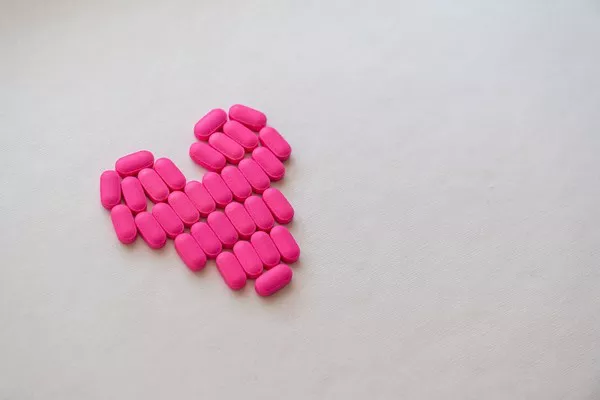Allergic reactions to medications are a serious health concern, ranging from mild discomfort to life-threatening conditions. Understanding which medicines are most likely to trigger allergic reactions, their mechanisms, and how to prevent and manage these reactions is vital for patients and healthcare providers. This article delves into the medications most commonly associated with allergies, their risk factors, and strategies to ensure safety.
Understanding Drug Allergies
Drug allergies occur when the immune system mistakenly identifies a medication as a harmful substance, triggering an immune response. This response can manifest in various forms, including rash, hives, swelling, difficulty breathing, or more severe conditions like anaphylaxis. Unlike side effects, which are expected and dose-dependent, allergic reactions are unpredictable and not directly related to the medication’s pharmacological action.
Types of Allergic Reactions to Medications
1. Immediate Reactions (Type I Hypersensitivity)
Mediated by Immunoglobulin E (IgE) antibodies, these reactions typically occur within minutes to hours after drug exposure. Symptoms may include hives, itching, swelling, and anaphylaxis.
2. Delayed Reactions (Non-IgE Mediated)
These reactions occur hours to days after exposure and may involve immune cells like T-cells. Symptoms can include rash, fever, and organ involvement, such as liver inflammation.
6 Medications Most Commonly Associated With Allergies
1. Penicillin and Other Beta-Lactam Antibiotics
Penicillin tops the list as the medication most likely to cause allergic reactions. Approximately 10% of the population reports a penicillin allergy, though true IgE-mediated allergies are less common.
Common Reactions:
- Skin rash
- Hives
- Anaphylaxis (in severe cases)
Mechanism:
Penicillin can bind to proteins in the body, forming complexes that the immune system recognizes as foreign, triggering a reaction.
Cross-Reactivity:
Patients allergic to penicillin may also react to other beta-lactam antibiotics, like cephalosporins.
2. Non-Steroidal Anti-Inflammatory Drugs (NSAIDs)
NSAIDs, such as ibuprofen and aspirin, are another common cause of allergic reactions.
Common Reactions:
- Respiratory symptoms (wheezing, nasal congestion)
- Urticaria (hives)
- Angioedema (swelling under the skin)
Mechanism:
NSAID allergies often involve non-IgE-mediated mechanisms, such as inhibition of cyclooxygenase (COX) enzymes, leading to imbalances in inflammatory mediators.
3. Sulfonamide Antibiotics
Sulfonamides, often used to treat bacterial infections, are a significant cause of allergic reactions.
Common Reactions:
- Rash
- Fever
- Severe skin conditions like Stevens-Johnson syndrome (SJS) or toxic epidermal necrolysis (TEN)
Mechanism:
These reactions are thought to involve T-cell-mediated hypersensitivity.
4. Chemotherapy Drugs
Drugs like carboplatin, paclitaxel, and cisplatin, used in cancer treatment, frequently cause allergic reactions due to their complex molecular structures.
Common Reactions:
- Anaphylaxis
- Rash
- Respiratory symptoms
Risk Factors:
Repeated exposure during multiple treatment cycles increases the likelihood of sensitization.
5. Biologic Medications
Biologic therapies, including monoclonal antibodies like infliximab and adalimumab, can cause allergic reactions, particularly during infusion.
Common Reactions:
- Infusion-related reactions (fever, chills, itching)
- Anaphylaxis
Mechanism:
These reactions may be due to immune system activation against the large protein molecules in biologics.
6. Anticonvulsants
Certain anticonvulsants, like phenytoin and carbamazepine, are associated with allergic skin reactions.
Common Reactions:
- Rash
- Severe conditions like SJS or TEN
Mechanism:
These reactions are often T-cell-mediated and may involve genetic predispositions.
Risk Factors for Drug Allergies
Certain factors increase the likelihood of developing drug allergies:
Genetic predisposition: Specific genetic markers, such as HLA-B*1502, are linked to hypersensitivity to certain drugs like carbamazepine.
Repeated exposure: The more frequently a drug is administered, the higher the risk of sensitization.
Age: Drug allergies are more common in adults than in children.
Comorbidities: Conditions like asthma or other allergies can heighten the risk.
Diagnosing Drug Allergies
1. Medical History
A thorough history, including previous drug exposures and reactions, is crucial for diagnosis.
2. Skin Testing
For certain drugs, such as penicillin, skin testing can help confirm an IgE-mediated allergy.
3. Laboratory Tests
Blood tests like serum tryptase or specific IgE levels may support the diagnosis.
4. Drug Provocation Tests
Under controlled conditions, small doses of the suspected drug are administered to observe reactions.
Managing Drug Allergies
1. Immediate Discontinuation
Stop the offending drug as soon as an allergic reaction is suspected.
2. Symptom Management
Mild Reactions: Antihistamines and corticosteroids can alleviate symptoms like rash and itching.
Severe Reactions: Epinephrine is the first-line treatment for anaphylaxis.
3. Desensitization
For essential medications, desensitization may allow safe administration by gradually increasing doses under medical supervision.
4. Allergy Identification
Patients should carry medical alert bracelets or cards specifying their drug allergies.
Preventing Drug Allergies
1. Avoid Unnecessary Medications
Minimizing exposure to drugs reduces the risk of allergic reactions.
2. Inform Healthcare Providers
Always inform healthcare professionals about known allergies to prevent inadvertent exposure.
3. Pharmacogenetic Testing
For certain high-risk drugs, genetic testing may predict susceptibility to allergic reactions.
When to Seek Medical Attention
Seek immediate medical care if symptoms like difficulty breathing, severe rash, or swelling occur after taking a medication. For known allergies, having an emergency action plan and access to epinephrine auto-injectors can be lifesaving.
Conclusion
Penicillin and other beta-lactam antibiotics are among the most allergic medicines, but numerous other drugs, including NSAIDs, sulfonamides, and biologics, can also cause significant allergic reactions. Proper identification, management, and prevention strategies are critical to minimizing risks and ensuring patient safety. By staying informed and vigilant, both patients and healthcare providers can navigate drug allergies effectively.
You Might Be Interested In:


